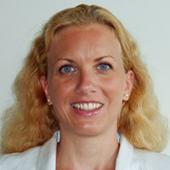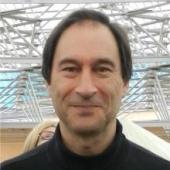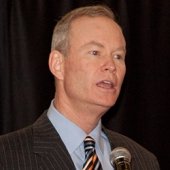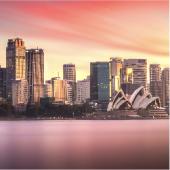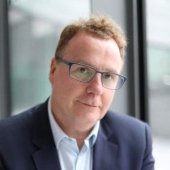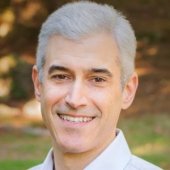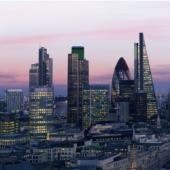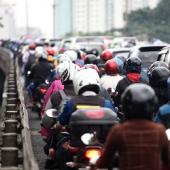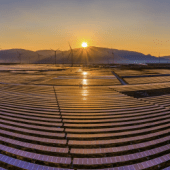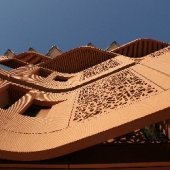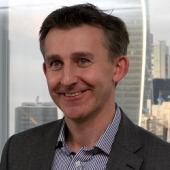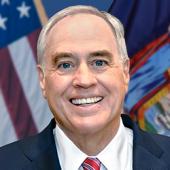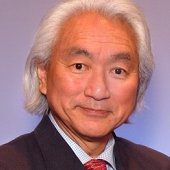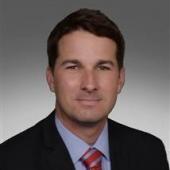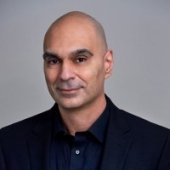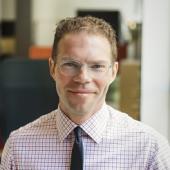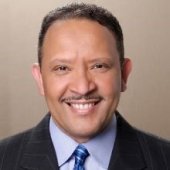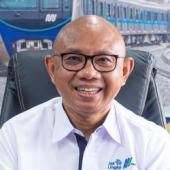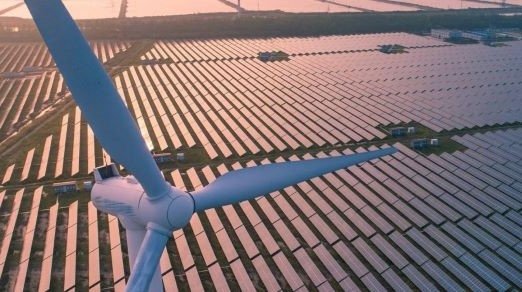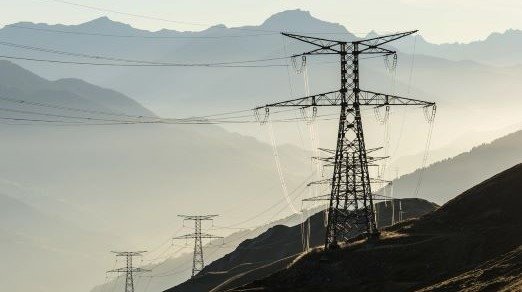Eye on energy: How the Enel Group's "circular cities" are changing the game
IN BRIEF
- 2:06 – A focus on sustainability: “As a company, we started a strong transition towards sustainability around a decade ago. We have a strong commitment on de-carbonization with a target of reducing our emission by 80% by 2030 and to be totally de-carbonized by 2050.”
- 4:21 – A strong focus on cities: “because cities are where basically 80% of the GDP is created and 70% of emission and energy are consumed so it’s really a laboratory to address the main challenge of the planet and solve the problems of the city.”
- 7:35 – The Urban Futurability project: “is being developed in several countries. We have one in Brazil which is Urban Futurability Sao Paolo, which is a concrete example of innovative and disruptive technology integrated with concepts of smart and circular city.”
In this video, Joe Kornik, Editor-in-Chief of VISION by Protiviti, hosts a panel of six representatives from the Enel Group—an energy company that began in Italy some 60 years ago and now has a global reach that extends to more than 30 countries on six continents. Enel has a major focus on the future of cities, and in particular, what it calls the Circular City model that they believe is essential to the long-term success of a city. Luca Meini is the Global Head of Circular Economy at Enel. He is joined by his collegues from around the world: Bettina Mirabile, Vivien Green, Jean Paul Zalaquett, Nhiura Coaquira and Giovanni Bertolino. All of them are leading future-focused initiatives at Enel related to EVs, mobility and sustainable energy.
Eye on energy: How the Enel Group's "circular cities" are changing the game – Video transcript
Joe Kornik: Welcome to the VISION by Protiviti interview. I’m Joe Kornik, Director of Brand Publishing and Editor-in-Chief of VISION by Protiviti, our quarterly content initiative where we look into the future to examine the strategic implications of big topics that will impact the C-suite and executive boardrooms worldwide. In this, our first topic, The Future of Cities, we’re exploring the evolution urban areas are undergoing post-COVID and how those changes will alter cities over the next decade and beyond.
Today, we’re fortunate enough to have a rare look inside the Enel Group, an energy company that began in Italy some 60 years ago and now has a global reach that extends to more than 30 countries on six continents, and we’ll hear about the work being done in some of those countries in just a few minutes. Enel has a major focus on the future of cities, and in particular, what it calls the Circular City model that is essential to the long-term success of a city. Here to talk about Enel and the Circular City concept is Luca Meini, the global head of Circular Economy at Enel. Luca, thanks so much for joining me today.
Luca Meini: Thanks, Joe.
Kornik: Luca, before we dig into the Circular City concept, if you could just spend a minute or two telling us a bit about the Enel Group.
Meini: Enel is a global utility that is solely working in all the value chain of energy from production to distribution to final use and smart technologies for the electric vector like electric mobility, et cetera. So we call it the whole value chain and we are present in around 30 countries. To give you an idea of the size, we are the biggest renewable energy producer and we are the widest base in terms of final customer and the user of the distribution grid. As a company, we started a strong transition towards sustainability around a decade ago, first engaging ourselves in the de-carbonization and then moving and expanding to the circular economy approach along our whole value chain. So, we had a strong commitment on de-carbonization with a target of reducing our emission by 80% by 2030 and to be totally de-carbonized by 2050.
Kornik: I know it’s a very progressive energy company. I know sustainability is at the heart of a lot of its initiatives and it’s a very visionary company. Can you explain this idea a little bit that Enel adopted about the benefits of a circular economy, and as a result, circular cities?
Meini: To get into this concept, I can say we have started — the first we did is a decision to bet strongly on de-carbonization, basically behind this idea that a business to be sustainable and also economic in the long term has to positively contribute to the main challenges of the planet in the context where it is operating, so de-carbonization was the first step. Then the natural evolution of this concept was to extend the approach toward all of our national power activities, and the circular economy was the tool to do this. Circular economy, just to highlight that, is not about waste management. Circular economy, for us, the mainstream concept nowadays is about redesigning the whole business model from the design and the sourcing phase. So we engage in this direction that for us represents a source that I can say of sustainable competitiveness both because you can on one side be more sustainable, that allows you to have a long-term stability and positive interaction with all your stakeholders.
At the same time, you have to do it of course in an economically positive way so you need to do it throughout innovation. Basically, design the whole economic model because if you try to change just the steps of your business, it doesn’t work. You need it to be designed from the beginning in order to create value along the whole value chain. In this framework, we put a strong focus on the cities because cities is the place where basically 80% of the GDP is created, 70% of emission and energy are consumed, so it’s really a laboratory to address the main challenge of the planet and solve the problems of the city. The challenge of the city is basically solving the challenges of the planet. So we put a strong focus in it from the very beginning and it's even more important now because cities with the COVID phase has also accelerated the reflection on how to redesign the future. Because of COVID, we have many discussions. The cities will have a bright future.
Kornik: Thanks, Luca. Next, we’re going to hear from you colleagues from around the world for some unique perspectives on the exciting work that the Enel Group is doing on the future of cities. First up is Bettina Mirabile, Head of CSV and Sustainability Projects Development, Global Infrastructure and Networks, to discuss the smart grid as a circular enabler.
Bettina Mirabile: Let me start by highlighting the strategic role of the smart grid into enabling the energy transition by accelerating the penetration of renewable resources and the electrification of consumption as the e-mobility. Cutting edge grid technology are a strategic key and tool to enable the city of the future we are aiming at by enabling the customer centricity and an environment focused on net-zero emission. Urban Futurability is the Enel smart grid project that is meeting this challenge by leveraging on an Industry 4.0 solution to apply the circular cities approach. The core of this project is the network digital twin, which is a digital twin, that is a full digitalization of both Enel infrastructure and the whole neighborhood. So we are transforming the area of the city into a living lab where we co-design a new circular solution together with the stakeholder to improve the quality of life and the resilience of these cities.
We stared for the first time of the insulation of the green open meter which is the most important circular economy project that we are facing in Italy because it’s not only cutting-edge smart media of the second generation but it’s also a more sustainable one, because we have been creating this smart meter, leveraging on regenerated plastic from these meters so we are able to reduce the environmental footprint consistently. To get you an idea, if we consider 10 millions of circular smart meters, we are able to save more than 70,000 tons of CO2 emissions.
Kornik: Thanks so much, Bettina. Next up, well hear from Vivien Green, Urban Futurabililty and Sustainability Specialist at Enel, and the work that she is doing around enhanced smart grid and Urban Futurability in Sao Paolo, Brazil. Vivien, could you just tell us a little bit more about that?
Vivien Green: Hi. As Bettina was saying, we are developing the Urban Futurability project in several countries. We have one in Brazil which is Urban Futurability Sao Paolo, which is a concrete example of innovative and disruptive technology integrated with concepts of smart and circular city. The projects being developed in Villa Olimpia neighborhood, which is a very dense area and financial heart of the city embracing 10,000 inhabitants per square kilometer and has many technical features favorable for us to test cutting-edge technologies. As Bettina was saying, it's perfect living lab. The project comprehends over 40 initiatives including the network digital twin that she mentioned, the sensor, thermal cameras and much more. All of those contribute with the great digitization and de-carbonization, leveraging predictive maintenance, improving equipment lifespan, material reuse, data sharing and much more.
This is the first step for evolved platforms that empower new concepts as energy-as-a-service. This technology helps us to promote great awareness in terms of energy use, efficiency and safety, along with for us to think in the time ahead of risks caused by extreme weather events that are knocking on our doors constantly. Moreover, the project is using sustainable technologies as well, through the principles of sustainable construction site, reducing environmental and social impacts. Example of those are the shared trenches, the less invasive excavation methods, the development of new equipments using recycled materials and optimizing design, leading to less usage of feed stock. Sustainability indicators are also being monitored during the civil work following safe polarity aspects and the identification of opportunities for improvement and impact mitigation.
Kornik: Thanks so much, Vivien. Next up, we're going to focus in on the work that Enel X is doing. First up is the electrification of the Pan-American Highway as we check in on something called project Long Way Up. For these insights, we're joined by Jean Paul Zalaquett, Head of e-Mobility at Enel X, Latin America. Jean Paul, tell us a little bit about project Long Way Up.
Jean Paul Zalaquett: A year ago, we were approached by Ewan McGregor and Boorman about their project of doing a documentary called “Long Way Up,” with two electric bikes and two electric trucks they would cross all the continent up. So we had the challenge to build a charging infrastructure for them. Since our motto is really to enable electric mobility in the continent, we found that very stimulating and we said yes. Well, that entailed building 200 charging stations across 20,000 kilometers, 11 countries, so that's about half the circle of the earth. While that was a great project, we really managed to have fun and deliver with — you can see the results in the documentary, Long Way Up. Well, that was a true demonstration that electric mobility can be enabled through investment and building infrastructure. We've been building chargers in major cities in Brazil, in Columbia, Peru, Argentina.
For example, in Chile as well, we have committed to install 1,000 chargers in major highways every 60 kilometers, that is the electric route. Because we think that charger infrastructure cannot be a limitation for this revolution of carbon emission reduction, of really having fun using electric vehicles. It's a great experience, and Latin America cannot be behind, so we have a lot of projects and we are so happy to make that happen and to be able to develop this technology in the continent.
Kornik: Thank you so much, Jean Paul. Next, we're going to focus in on the e-buses and strategy in Chile and Columbia with Nhiura Coaquira, Head of Business Development for Latin America for Enel X. Nhiura, what's Enel X up to when it comes to the future of e-buses in those regions?
Nhiura Coaquira: Well, as you may know, here in the region, we have achieved over 1,300 buses served, so the movement and the promotion of electric buses in the region is going up. We have the biggest fleets outside of China here in Columbia, in Chile and in the region so that's why Enel X is making all the efforts to provide the best solutions to these regions and worldwide. With these customized solutions that we are planning here in the region we can offer a complete solution to the operators, to the cities. The plan for the future is to make a circular economy and providing with sustainability solutions to the final clients. How do we make feasible these models here in the region is to make a division into the provision of the fleet, which means the ownership of the fleet being separated to the operation.
This is the model that we are choosing right now in Chile and Columbia, and that we want to promote to other countries like Peru, Ecuador and Mexico to develop in this way that would be much easier for the cities, for the operators to manage and to increase the fleets of electric mobility.
Kornik: Finally, we have Giovanni Bertolino, the Head of E-mobility for North America, to talk about Enel X's work in mobility and the renewables in North America. Giovanni.
Giovanni Bertolino: Hello, Joe. Yes, Enel X in North America in mobility is [Unintelligible]. We are one of the main providers of smart charging solutions for EVs. I'd like stress the smart word because it's really what it is about. We are providing chargers who have the ability to optimize when the charging happens, and that is extremely helpful for utilities and for customers who track best rates or optimize around the carbon emission of the electricity which flows into the grid at any given time.
On the other side, we are starting to bring into this market the model that we have developed in Latin America around electrification of public transportation. We feel that it's an extremely important opportunity to further address carbon emission in a sector where in North America there are almost 100,000 transit busses on the roads, 500,000 school buses and millions of other heavy- and medium-duty vehicles.
We've started there with a couple of projects in Massachusetts for which we have received a grant from the Massachusetts Clean Energy Center. One is with MBTA, the Massachusetts Bay Transportation Authority, and we're helping them in defining how they are going to charge their buses. In their roadmap, that want to deploy hundreds electric busses and convert depots to support those busses, and the question is, "How do I design the charging infrastructure? How do I optimize the charging to reduce the cost and make sure that it can meet those routes?" We're helping them in that specific piece which is key to inform their strategy going forward.
Kornik: Yes, thank you so much, Giovanni, and thank you all for a wonderful look inside Enel and the future of cities, fascinating stuff from all over the globe. Thanks again to all of our participants and speakers today for their insights. Luca, thank you so much for providing this unique and insightful look inside the Enel Group today.
Luca Meini leads Enel Group’s circular economy activities. He is in charge of supporting business line initiatives, coordinating cross-divisional activities and positioning the Enel Group externally. He has held previous position at Enel Group within the Market Division and the Generation & Energy Management Division. He holds a Ph.D. in Electrical Engineering from the University of Genoa and an MBA from University of Bologna.
Did you enjoy this content? For more like this, subscribe to the VISION by Protiviti newsletter.



